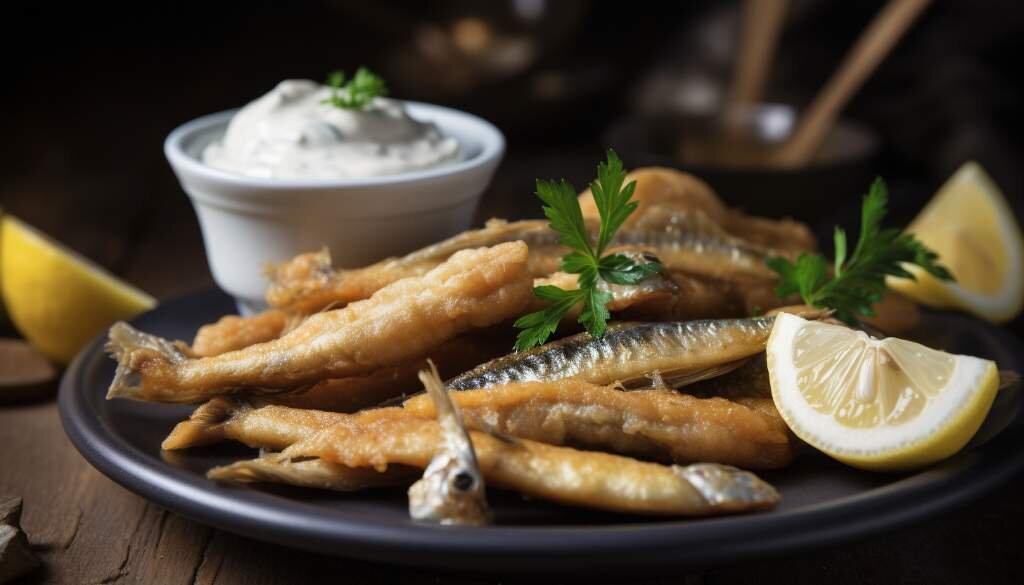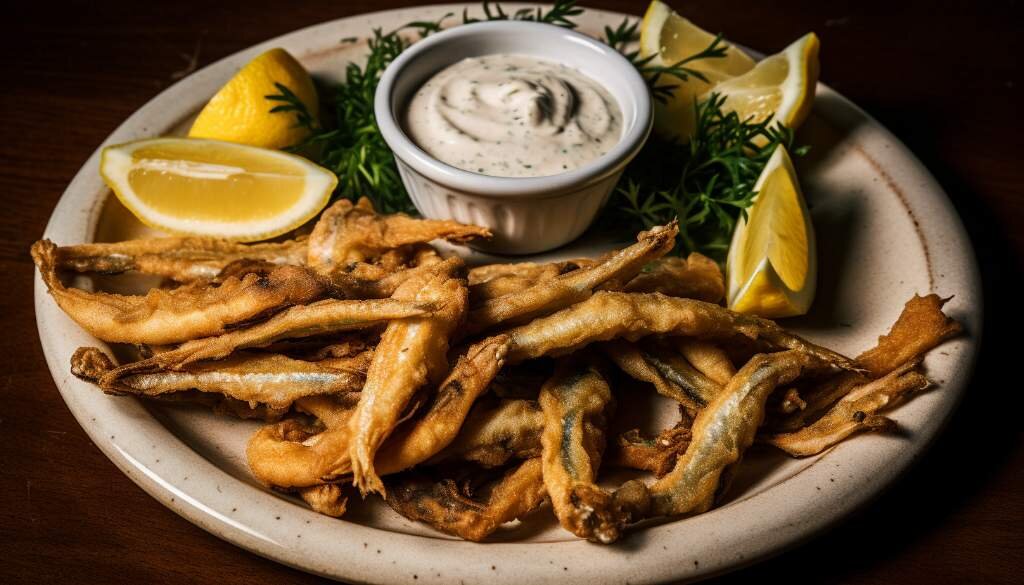
Introduction to Smelt
Smelt is a small fish that belongs to the Osmeridae family. It is known for its slender body and silver-colored scales. Introduction to Smelt provides an overview of this fascinating fish and its various aspects.
In the following sections, we will explore the description and characteristics of smelt, including its physical appearance, size, and unique features. We will also delve into its habitat and distribution, discussing where smelt can be found in the wild and how it adapts to different environments.
Additionally, we will delve into the culinary side of smelt and its significance as a food source. This will include exploring its culinary uses, such as its popularity in various cuisines around the world, as well as its nutritional value and the benefits it offers.
Lastly, we will discover the exciting world of smelting festivals. We will explore the traditional celebrations that revolve around smelt, the cultural significance of these festivals, and how they bring communities together in a celebration of this unique fish.
Description and Characteristics
Smelt are small, silvery fish that belong to the family Osmeridae. They are commonly found in freshwater and saltwater environments, making them a versatile species. Smelt have a streamlined body shape, which allows them to navigate through water with ease. They typically grow to be between three to eight inches in length, depending on the species.
One of the notable characteristics of smelt is their translucent appearance. Their scales are almost transparent, giving them a distinctive shimmer when light hits the water. This makes them captivating to observe in their natural habitat.
Smelt have keeled scales, which means that the scales have a ridge running down their center. This feature helps them glide through the water while maintaining balance and stability. Their bodies are also laterally compressed, meaning they are flattened from side to side. This unique body shape allows them to maneuver swiftly to catch prey or avoid predators.
Another interesting aspect of smelt is their diet. They are primarily carnivorous, feeding on small invertebrates and other fish. Their sharp teeth enable them to grasp and consume their prey efficiently. Smelt are known to be opportunistic feeders, taking advantage of food sources that are readily available in their environment.
Smelt are found in various habitats around the world. They can be found in both freshwater rivers and lakes, as well as in coastal saltwater areas. Some species of smelt are anadromous, meaning they migrate from the ocean to freshwater rivers to spawn. This makes them an important part of the ecosystem and a valuable resource for both wildlife and humans.
Habitat and Distribution
Smelt, a small fish belonging to the family Osmeridae, are primarily found in freshwater and marine habitats across the Northern Hemisphere. They have a wide distribution and can be found in various regions around the world.
In terms of habitat, smelt are known to inhabit both freshwater and saltwater environments. In freshwater, they are commonly found in lakes and rivers, while in marine environments, they are often found near coastal areas.
The distribution of smelt is quite extensive. They can be found in North America, particularly in the Great Lakes region and the Pacific Northwest. In Europe, smelt are found in the Baltic Sea, the North Sea, and various freshwater bodies. They are also found in parts of Asia, including Japan, China, and Russia.
Smelt are known for their ability to adapt to different habitats and can be found in both cold and warm waters. They typically spawn in freshwater bodies, migrating from saltwater to freshwater rivers and streams for reproduction.
Overall, the habitat and distribution of smelt vary depending on the species and the specific region. They play an important ecological role in the food chain and are a valuable resource for both commercial and recreational fishing.

Smelt as Food
Smelt as Food refers to the consumption and utilization of smelt, a type of small fish, in various culinary preparations. Smelt, also known as smelt fish, is prized for its delicate flavor and tender flesh.
In this section, we will explore the culinary uses of smelt, its nutritional value, and provide some recipes and cooking techniques to make the most of this delectable fish.
Culinary Uses
Smelt, being a small fish with a delicate flavor, is highly versatile in culinary applications. Here are some popular culinary uses of smelt:
- Frying: One of the most common ways to prepare smelt is by frying. The small size of the fish lends itself well to this method, as it cooks quickly and evenly. To fry smelt, simply coat the fish in a light batter or breadcrumb mixture and fry them in hot oil until they turn golden and crispy. Fried smelt is often served as a tasty appetizer or as a main course accompanied by dipping sauces.
- Grilling and Barbecuing: Smelt can also be grilled or barbecued, which imparts a smoky flavor to the fish. This method is ideal for those who prefer a healthier option as it requires less oil. Smelt can be marinated with herbs, spices, and lemon juice before grilling, or simply seasoned with salt and pepper. Cook the fish on a hot grill for a few minutes on each side until they are cooked through and have beautiful grill marks.
- Pickling: Pickled smelt is a popular delicacy in some cuisines. The fish is first cleaned and then soaked in a mixture of vinegar, salt, and various spices for a few days to pickle. The result is a tangy and slightly sour fish that can be enjoyed on its own or used as a topping for salads and sandwiches.
- Smoking: Another method to preserve and enhance the flavor of smelt is through smoking. Smoked smelt has a rich, smoky taste that adds depth to dishes. The fish is typically brined before being placed in a smoker, where it is slowly cooked and infused with smoky aromas. Smoked smelt can be enjoyed as a standalone snack or incorporated into salads, pasta, or dips.
- Baking: Baking smelt is a healthy and easy cooking method that retains the natural flavors of the fish. Smelt can be seasoned with herbs, spices, and lemon juice, and then baked in the oven until it becomes tender and flaky. Baked smelt can be served as a main course alongside vegetables or used as a stuffing for fish tacos or sandwiches.
- Sushi and Sashimi: Smelt is also commonly used in sushi and sashimi preparations. The fish, when extremely fresh, can be thinly sliced and served raw as sashimi, or used as a filling for sushi rolls. Its mild flavor and delicate texture make it a popular choice for sushi enthusiasts.
These are just a few of the culinary uses of smelt. Its versatility allows for creativity in the kitchen, making it a favored ingredient among chefs and home cooks alike.
Nutritional Value
Smelt fish are not only delicious, but they also offer a range of important nutrients that contribute to a healthy diet. Despite their small size, these little fish pack a big nutritional punch. Here are some of the key nutritional benefits of smelt:
- Protein: Smelt fish are an excellent source of high-quality protein. Protein is essential for building and repairing tissues, creating enzymes and hormones, and supporting a healthy immune system.
- Omega-3 Fatty Acids: Smelt fish are rich in omega-3 fatty acids, particularly EPA (eicosapentaenoic acid) and DHA (docosahexaenoic acid). These fatty acids have been shown to reduce inflammation, support brain health, and promote heart health.
- Vitamins and Minerals: Smelt fish are a good source of several important vitamins and minerals, including vitamin B12, selenium, phosphorus, and calcium. Vitamin B12 is essential for nerve function and the formation of red blood cells, while selenium acts as an antioxidant and supports immune function.
- Low in Mercury: Smelt fish are low in mercury compared to larger predatory fish. This makes them a safe choice for regular consumption, especially for pregnant women and young children.
Incorporating smelt fish into your diet can provide you with these nutritional benefits, helping you maintain a well-rounded and healthy eating pattern. Whether grilling, baking, or frying, there are numerous delicious ways to enjoy the nutritional advantages of smelt!
Recipes and Cooking Techniques
In this sub-section, we will explore some delicious recipes and cooking techniques for smelt. Whether you prefer a simple preparation or a more elaborate dish, smelt can be a versatile and tasty addition to your menu. Let's dive in!
1. Grilled Smelt:
Grilling smelt is a popular and straightforward way to prepare this fish. Here's a simple recipe:
- Preheat the grill to medium-high heat.
- Clean the smelt by removing the scales and entrails.
- Brush the fish with olive oil and season with salt and pepper.
- Grill the smelt for about 2-3 minutes per side until they are cooked through and nicely charred.
- Serve the grilled smelt with a squeeze of lemon and a sprinkle of fresh herbs.
2. Smelt Fritters:
If you prefer a crispy and indulgent treat, try making smelt fritters. Here's a recipe to get you started:
- In a bowl, combine 1 cup of flour, 1 teaspoon of baking powder, and a pinch of salt.
- In a separate bowl, whisk together 1 egg, 1/2 cup of milk, and 2 tablespoons of melted butter.
- Pour the wet ingredients into the dry ingredients and mix until well combined.
- Add cleaned and chopped smelt to the batter and gently fold them in.
- Heat oil in a frying pan over medium heat. Drop spoonfuls of the batter into the hot oil and fry until golden brown and crispy.
- Drain the fritters on a paper towel and serve them with a dipping sauce of your choice.
3. Smelt Escabeche:
Escabeche is a flavorful marinade that enhances the taste of smelt. Here's a recipe to try:
- Clean the smelt and season them with salt and pepper.
- In a saucepan, heat olive oil and sauté thinly sliced onions, garlic, and bell peppers until softened.
- Add a splash of white wine vinegar, a pinch of sugar, and a bay leaf to the pan.
- Place the seasoned smelt in the pan and cook for about 5 minutes, until they are opaque and cooked through.
- Transfer the smelt and the marinade to a serving dish and let it cool to room temperature before serving.
These are just a few examples of how you can cook smelt. Feel free to experiment with different flavors and techniques to create your own unique dishes. Enjoy!

Smelting Festivals
Smelting Festivals are traditional celebrations that revolve around the smelting of fish called smelt. These festivals are deeply rooted in communities that have a long history of fishing and rely on smelt as a valuable food source.
Smelting Festivals bring together people to honor and celebrate the rich cultural significance of smelt. These festivals often include various activities, performances, and rituals that showcase the importance of smelt in the local community.
In the following sub-sections, we will explore different aspects of Smelting Festivals, including their traditional celebrations and cultural significance. Let's dive deeper into the fascinating world of Smelting Festivals and discover the unique traditions associated with them.
Traditional Celebrations
Traditional Celebrations related to smelting festivals are an essential part of the cultural heritage of many communities around the world. These festivals are a way to celebrate the abundance of smelt and showcase the culinary and cultural significance of this small fish.
In many coastal regions, smelting festivals are held annually during the peak smelting season. These festivals bring together locals and tourists alike to indulge in a variety of activities centered around smelt.
One of the highlights of these traditional celebrations is the smelt fry. Smelt are typically fried whole, coated in a light batter, and served hot and crispy. This delicious dish is often accompanied by other regional delicacies and locally brewed beverages.
Smelting festivals also feature cooking competitions, where participants showcase their culinary skills by preparing smelt dishes in various styles and presentations. These competitions not only offer a chance to sample unique and innovative smelt recipes but also provide an opportunity for local chefs and home cooks to showcase their talent.
Aside from indulging in mouthwatering smelt dishes, visitors to smelting festivals can engage in a range of other activities. These may include live music performances, dance shows, arts and crafts exhibitions, and games for people of all ages.
Additionally, smelting festivals often incorporate educational and environmental initiatives. Local organizations and government agencies use these festivals as a platform to raise awareness about the importance of preserving smelt habitats and maintaining sustainable fishing practices.
Attending a smelting festival is an immersive cultural experience, providing insights into the local traditions, customs, and values associated with the fish. These celebrations highlight the deep connection between communities and their natural surroundings, emphasizing the importance of ecological balance and the role of smelt in the ecosystem.
Cultural Significance
In addition to being a popular food, smelt holds cultural significance in many communities where smelting festivals are celebrated. These festivals not only showcase the local tradition and culture but also serve as a way to honor the fish and the importance it holds in the community.
Smelting festivals often have deep roots in fishing communities, where the tradition of catching and cooking smelt has been passed down for generations. These festivals bring people together to celebrate the abundance of smelt and to participate in various activities that revolve around the fish.
One of the main cultural significances of smelting festivals is the sense of community and togetherness they foster. People from all walks of life come together to enjoy the festivities, creating a sense of unity and shared camaraderie. This strengthens social bonds and promotes a sense of belonging.
These festivals also provide an opportunity to showcase and preserve local traditions and customs. From traditional fishing techniques to cooking methods, smelting festivals offer a platform to keep the cultural heritage alive and pass it on to future generations. They serve as a reminder of the importance of honoring and preserving cultural practices.
Furthermore, smelting festivals often feature cultural performances, including music, dance, and storytelling. These performances not only entertain the attendees but also serve as a way to educate and engage them in the cultural history of the community. This allows for the transmission of cultural knowledge and traditions through artistic expression.
Another aspect of the cultural significance of smelting festivals is their economic impact. These festivals attract tourists and visitors who are interested in experiencing the local culture and traditions. This influx of visitors stimulates the local economy by boosting tourism, supporting local businesses, and creating job opportunities.
In conclusion, smelting festivals hold cultural significance by fostering a sense of community, preserving local traditions, promoting cultural education, and driving economic growth. These festivals play a vital role in keeping the heritage alive and creating a vibrant and thriving community.








